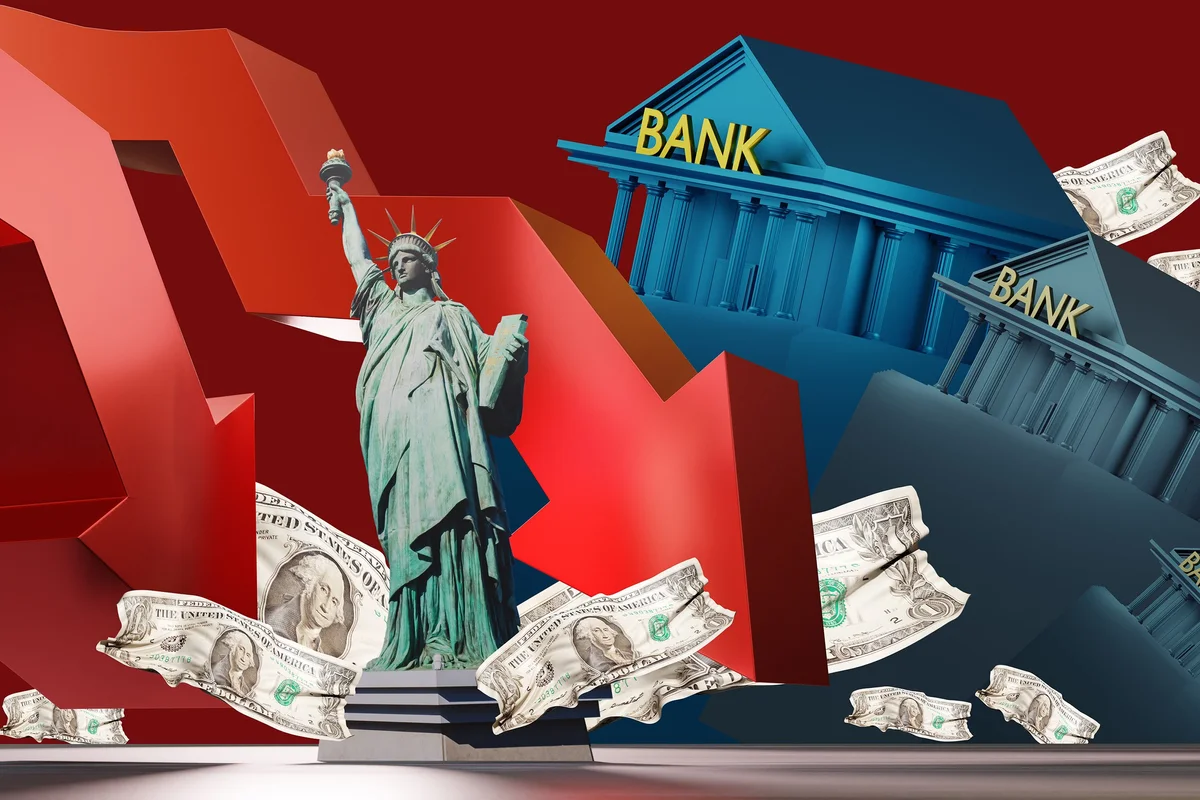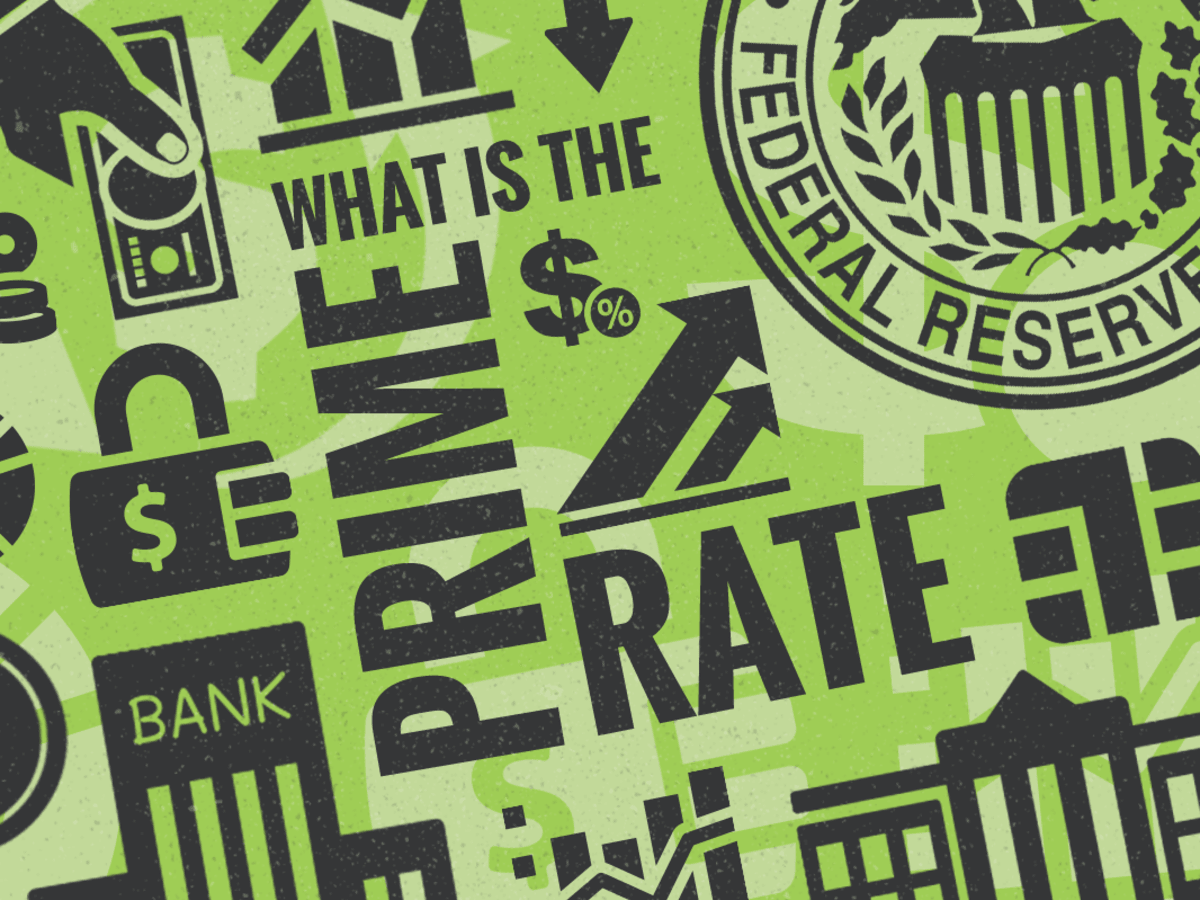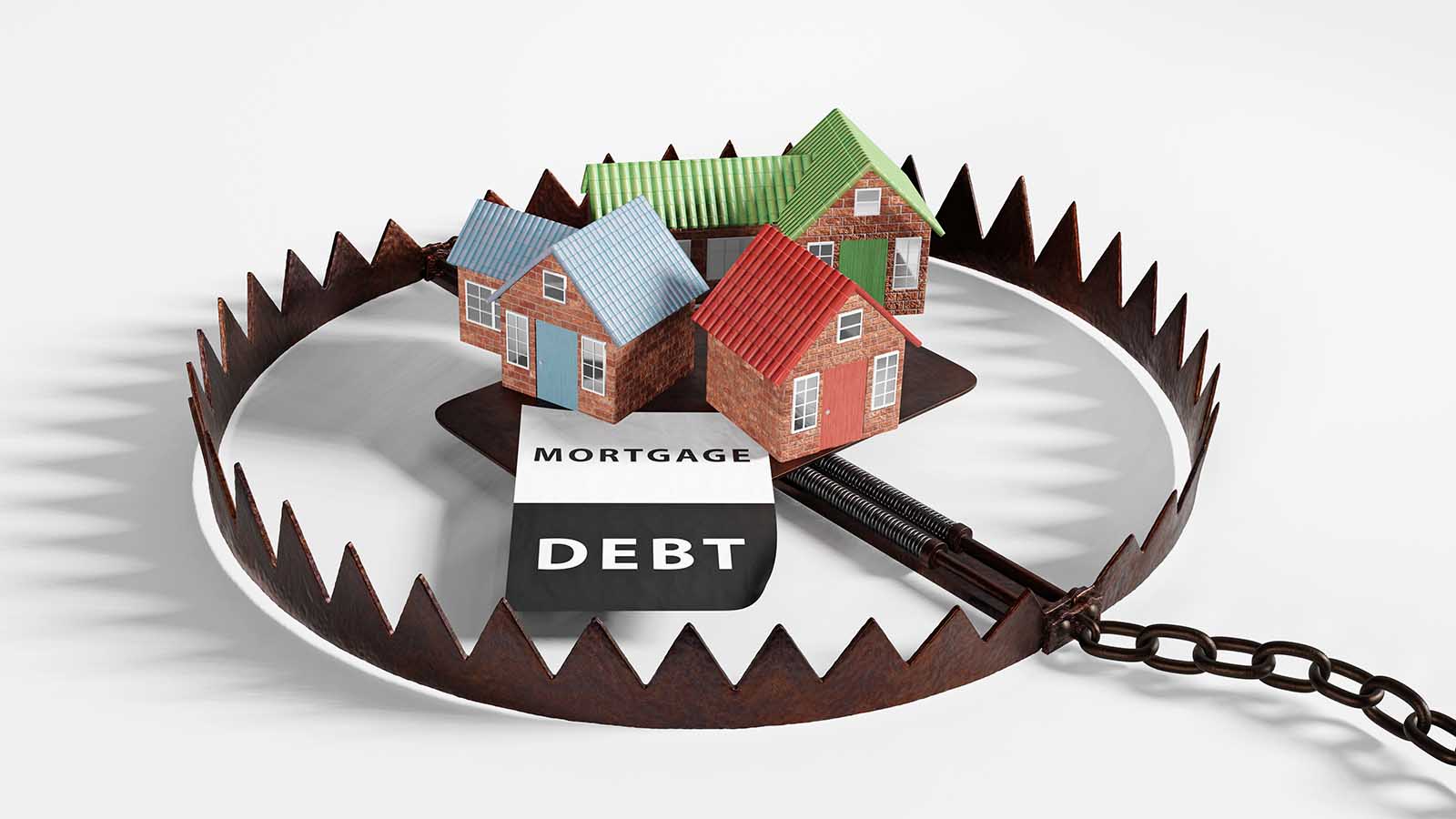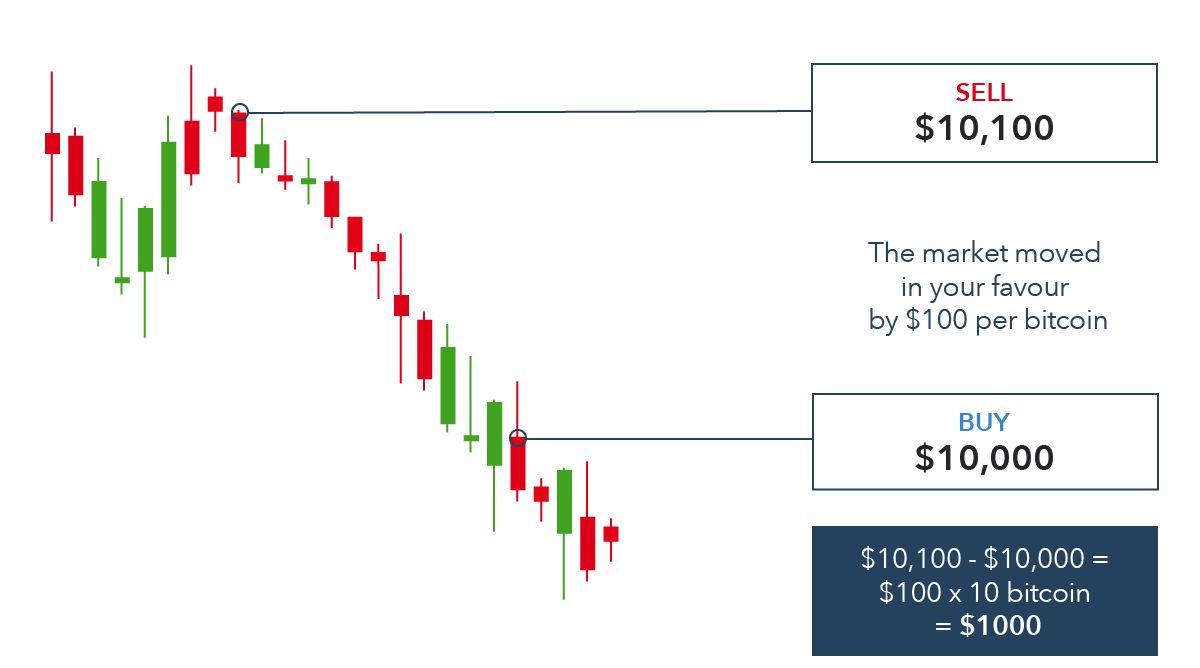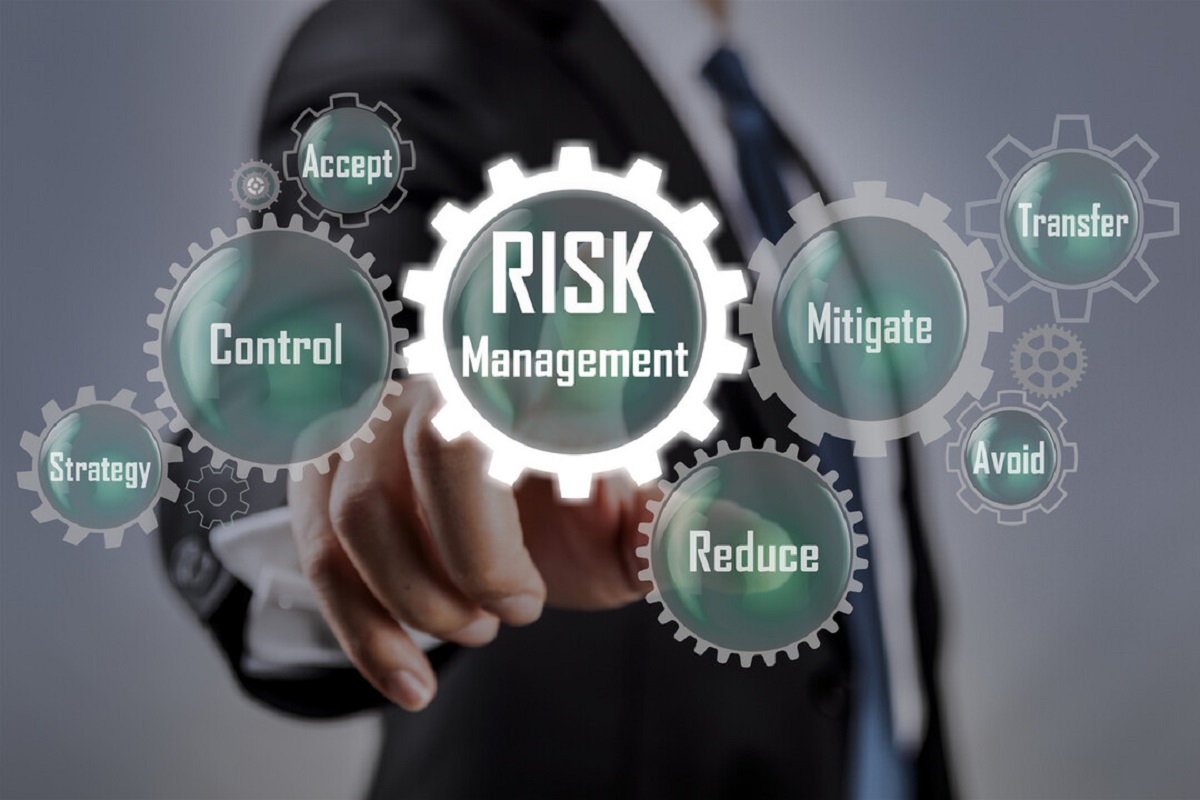Introduction
Subprime lending, a practice that involves extending credit to borrowers with low credit scores or limited credit history, has been a controversial topic for decades. It has been at the center of financial crises, economic recessions, and regulatory debates. Understanding the origins and implications of subprime lending is essential to grasp the complexities of the modern financial system.
The history of subprime lending dates back to the early 20th century when lenders started offering loans to borrowers who were considered “risky” due to their poor creditworthiness. However, it wasn’t until the late 20th century that subprime lending became a significant force in the financial industry.
This article aims to explore the origins and evolution of subprime lending, examining the key events and factors that contributed to its rise and subsequent fall. By providing historical context, we can gain a deeper understanding of the impact subprime lending has had on the economy and the measures taken to regulate it.
It is essential to note that this article does not seek to pass judgment on subprime lending itself but rather to provide insight into its historical development and the lessons learned from its consequences.
Through a historical lens, we will examine the factors that fueled the growth of subprime lending, the regulatory changes that allowed it to flourish, and the subsequent bubble and crisis that unfolded.
Now, let’s delve into the fascinating story of subprime lending, starting with its origins and the role of the Savings and Loan (S&L) crisis in the 1980s.
The Origins of Subprime Lending
The roots of subprime lending can be traced back to the early 20th century when lenders began offering loans to borrowers with less-than-ideal creditworthiness. These borrowers were usually denied access to traditional forms of credit, such as mortgages or personal loans. Instead, they turned to lenders who were willing to extend credit to individuals considered more financially risky.
In the early days, subprime lending primarily focused on installment loans for purchasing durable goods, such as furniture or appliances. These loans often carried higher interest rates and stricter terms compared to prime loans. Despite the higher costs, subprime lending provided an opportunity for individuals who had limited access to credit to fulfill their consumption needs.
As the 20th century progressed, subprime lending expanded its reach beyond installment loans. It began to encompass other forms of credit, such as auto loans and mortgages. This expansion was fueled by changing economic conditions, evolving consumer needs, and, most importantly, financial innovation.
One significant milestone in the development of subprime lending was the Savings and Loan (S&L) crisis in the 1980s. The S&L crisis resulted from a combination of factors, including relaxed lending standards, rising interest rates, and risky investments made by savings and loan associations. The crisis led to the collapse of numerous S&L institutions and incurred significant financial losses.
One of the consequences of the S&L crisis was the increased scrutiny and regulation of the financial industry. The regulatory response aimed to mitigate the risks associated with subprime lending, as it was a major contributing factor to the crisis. However, over time, the regulatory environment shifted, leading to significant changes in lending practices.
In the next section, we will explore the impact of deregulation on subprime lending and how it paved the way for its exponential growth in subsequent decades.
The Role of the S&L Crisis in the 1980s
The Savings and Loan (S&L) crisis of the 1980s played a crucial role in shaping the landscape of subprime lending. The crisis, which had its roots in the gradual deregulation of the financial industry, had far-reaching consequences that reverberated throughout the economy.
Prior to the crisis, S&L institutions were established as specialized banks that primarily focused on accepting deposits and granting mortgages to homebuyers. They were subject to strict regulations designed to ensure the stability and security of the banking system.
However, over time, regulators began loosening these regulations, allowing S&L institutions to engage in riskier activities such as commercial real estate lending and speculative investments. This deregulation allowed S&Ls to pursue higher profits but also exposed them to greater risks.
As interest rates steadily rose in the 1980s, many S&Ls found themselves grappling with their existing portfolio of fixed-rate mortgage loans that carried considerably lower interest rates. Coupled with a deteriorating real estate market, many S&Ls faced significant financial distress.
The crisis reached its peak in the late 1980s when a wave of S&L failures shook the financial system. The federal government stepped in to bail out the failing institutions, costing taxpayers billions of dollars.
The S&L crisis highlighted the dangers of inadequate regulation and risk-taking in the financial industry. It exposed the vulnerability of S&L institutions, sparked a public outcry, and led to the implementation of tighter regulations and oversight.
While the primary focus of the S&L crisis was on the banking system, it had indirect consequences for subprime lending. As the crisis unfolded, policymakers and regulators questioned the wisdom of allowing riskier lending practices to flourish. This increased skepticism towards subprime lending and propelled efforts to enhance regulation and oversight in the coming years.
However, the aftermath of the S&L crisis also set the stage for a gradual shift in the regulatory environment, which would ultimately contribute to the resurgence of subprime lending. The next section will delve into the impact of deregulation on subprime lending and shed light on the factors that spurred its rapid growth.
Deregulation and its Impact on Subprime Lending
In the years following the Savings and Loan (S&L) crisis, the financial industry witnessed a fundamental shift towards deregulation. This shift had a profound impact on subprime lending, as it opened the floodgates for a surge in risky lending practices.
With the aim of stimulating economic growth and promoting financial innovation, policymakers in the 1990s and early 2000s implemented various measures to reduce regulatory constraints on lending institutions. These changes were intended to increase access to credit for borrowers, including those with lower credit scores or limited credit histories.
One significant piece of legislation that contributed to the rise of subprime lending was the Financial Services Modernization Act of 1999, also known as the Gramm-Leach-Bliley Act. This act repealed key provisions of the Glass-Steagall Act, which had previously separated commercial banking, investment banking, and insurance activities.
By removing these barriers, financial institutions were able to expand their operations and offer a wider range of financial products and services, including subprime loans. This led to a proliferation of subprime mortgage lenders and a rapid increase in lending to borrowers who would have previously been considered too risky.
Moreover, regulatory agencies such as the Office of the Comptroller of the Currency (OCC) loosened their oversight and supervision of lending practices. This lighter regulatory touch meant that lenders had more flexibility in offering subprime loans with higher interest rates, adjustable-rate features, and lenient credit criteria.
Combined with an atmosphere of low interest rates and a booming housing market, these factors created a fertile ground for the expansion of subprime lending and the securitization of subprime mortgages.
Securitization, which involves bundling individual loans into mortgage-backed securities (MBS) and selling them to investors, allowed lenders to transfer the credit risk associated with subprime mortgages to other parties. This practice provided a seemingly efficient way to access capital and expand lending activities, but it also introduced opacity and complexity into the financial system.
The impact of deregulation and the subsequent rise of subprime lending were felt not only within the banking industry but also in the broader economy. The next section will explore the consequences of this growth, as subprime lending extended beyond mortgages into other areas such as auto loans.
The Rise of Securitization and Subprime Mortgages
The expansion of subprime lending in the late 20th and early 21st centuries was closely tied to the rise of securitization, particularly in the realm of subprime mortgages. This financial innovation played a significant role in fueling the growth of subprime lending and ultimately contributed to the financial crisis that unfolded in 2008.
Securitization involves the process of pooling individual loans, such as mortgages, into a package called a mortgage-backed security (MBS). These MBS are then sold to investors, who receive a return based on the interest and principal payments from the underlying loans.
Subprime mortgages became a key component in the securitization process. Lenders originated loans to borrowers with lower credit scores or non-traditional income sources, and then bundled these loans into MBS to be sold to investors in the secondary market.
This securitization process allowed lenders to offload the credit risk associated with subprime mortgages, reducing their exposure and enabling them to generate additional funds for further lending. It also provided an avenue for investors seeking higher yields to invest in these MBS.
The demand for subprime mortgage-backed securities grew rapidly, fueled by the perception that these securities carried relatively high returns with the appearance of low risk. However, the underlying risk was often underestimated or obscured by complex financial engineering.
As a result, subprime mortgage lending surged, encouraging lenders to relax underwriting standards and issue loans to borrowers who would not have qualified in the past. Lax lending practices, including the use of adjustable-rate mortgages (ARMs) and no-documentation loans, became commonplace.
Additionally, the securitization process created a disconnection between lenders and borrowers. Mortgage originators had less incentive to assess the creditworthiness of borrowers, as the loans would be sold off to investors. This lack of accountability further fueled the growth of subprime lending.
The rise of securitization and subprime mortgages contributed to the housing bubble, as the availability of easy credit led to soaring demand for housing. This created upward pressure on home prices, creating an illusion of prosperity and further fueling the perception of low risk in the subprime mortgage market.
The dangerous combination of fraudulent lending practices, excessive risk-taking, and the complexity of securitized products eventually led to the burst of the housing bubble and the subsequent subprime crisis in 2008. The impact of this crisis reverberated throughout the global financial system and led to a reevaluation of the role of subprime lending and securitization in the economy.
In the next section, we will examine another area where subprime lending experienced significant growth and its impact on the financial landscape: subprime auto loans.
The Dot-Com Bubble and Subprime Auto Loans
While subprime mortgages were dominating the financial landscape in the early 2000s, another area of subprime lending was silently gaining momentum: subprime auto loans. The expansion of subprime auto lending was fueled by a combination of factors, including the dot-com bubble and evolving consumer behaviors.
The dot-com bubble of the late 1990s and early 2000s saw a speculative frenzy in technology stocks, with investors chasing after sky-high valuations of internet-based companies. However, when the bubble burst in 2000, it led to a significant decline in stock prices and widespread economic uncertainty.
This economic downturn impacted the auto industry, as consumer spending contracted. Automakers, faced with declining sales, sought ways to stimulate demand and drive sales. One strategy was to offer financing options to individuals with lower credit scores or limited credit history – the subprime borrowers who were previously underserved.
With looser lending standards and a desire to spur auto sales, lenders began approving subprime auto loans to borrowers who would have previously struggled to get approved. Consequently, subprime auto lending grew rapidly, with lenders increasingly targeting borrowers with lower credit scores and offering high-interest loans.
Borrowers, attracted by the promise of owning a vehicle despite their credit challenges, willingly accepted these loans. Subprime auto loans became a lifeline for many individuals who needed reliable transportation but did not qualify for traditional loans.
However, similar to the subprime mortgage market, excessive risk-taking and predatory lending practices soon emerged in the subprime auto lending sector. Some lenders engaged in deceptive practices, such as approving loans with little consideration for the borrower’s ability to repay, or charging high interest rates and fees.
Additionally, financial innovations, such as the securitization of subprime auto loans, became prevalent. These loans were bundled into asset-backed securities (ABS) and sold to investors, mirroring the process seen in subprime mortgages. The demand for higher-yielding assets led investors to pour money into these ABS, further fueling the growth of subprime auto lending.
This expansion of subprime auto lending raised concerns about rising delinquency and default rates, mirroring the concerns seen in the subprime mortgage market. As the economy underwent another downturn during the global financial crisis in 2008, many subprime auto borrowers struggled with loan repayment, resulting in a surge in defaults.
The repercussions of the subprime auto loan market were substantial. Automakers faced declining sales and suffered financial losses. Lenders faced non-performing loans and reduced borrowing appetite, negatively impacting their profitability. And borrowers, who often found themselves with onerous repayment terms, faced the risk of vehicle repossession and further financial instability.
The dot-com bubble served as a catalyst for the growth of subprime auto loans, but the consequences were felt for years to come. The next section will examine the pivotal role played by the housing boom and its connection to subprime mortgages.
The Housing Boom and Subprime Mortgages
The housing boom of the early to mid-2000s was a crucial period for the exponential growth of subprime mortgages. It was characterized by surging home prices, increased demand for housing, and a relaxed lending environment that fueled the subprime mortgage market.
Low interest rates, coupled with a strong belief in the ever-increasing value of real estate, enticed many individuals to enter the housing market. As demand for homes soared, especially in desirable areas, home prices skyrocketed, creating a phenomenon known as the housing bubble.
During this boom, subprime mortgages played a prominent role in expanding homeownership opportunities for borrowers with less-than-perfect credit. Lenders, emboldened by securitization and the perception of low risk, aggressively marketed subprime mortgages to a wider range of borrowers.
These mortgages allowed borrowers who would not have qualified for traditional prime mortgages to purchase homes, often with little or no down payment. Lenders relaxed their underwriting standards, accepting lower credit scores, higher debt-to-income ratios, and offering loans with adjustable interest rates.
As more subprime borrowers entered the market, demand for housing surged even further. The increased demand created a self-reinforcing cycle, with rising home prices attracting more speculative buyers and fueling expectations of further appreciation.
At the same time, the securitization of subprime mortgages continued to grow, providing lenders with a means to offload the credit risk associated with these loans. These packaged subprime mortgages, bundled into mortgage-backed securities (MBS), were eagerly purchased by investors seeking higher yields in the midst of a low-interest-rate environment.
The influx of investment capital into the housing market further contributed to the housing bubble, as it increased the availability of credit and fueled the demand for more subprime mortgages. This led to a situation where both lenders and borrowers were driven by the belief that housing prices would continue to rise indefinitely.
However, the housing boom was unsustainable, and cracks in the foundation began to emerge. As housing prices reached unsustainable levels and interest rates started to rise, many borrowers found themselves struggling to meet their mortgage payments.
The bursting of the housing bubble in 2007-2008 marked the beginning of the subprime mortgage crisis. Many homeowners faced negative equity, owing more on their mortgages than their homes were worth. Mortgage defaults and foreclosures soared, leading to financial losses for lenders and investors holding subprime mortgage-related securities.
The fallout from the housing boom and subsequent subprime mortgage crisis spread throughout the global financial system, resulting in a severe economic recession and prompting widespread regulatory reforms.
As we will explore in the next sections, the burst of the housing bubble and the ensuing subprime crisis led to significant aftershocks, reshaping the financial industry and triggering regulatory changes aimed at preventing a similar crisis in the future.
The Burst of the Housing Bubble and Subprime Crisis
The burst of the housing bubble and the subsequent subprime crisis in 2007-2008 marked a turning point in the global financial landscape. It exposed the inherent risks and vulnerabilities in the subprime mortgage market, unleashing a devastating chain reaction that reverberated throughout the economy.
As housing prices reached unsustainable levels and borrowers struggled to meet their mortgage payments, a wave of defaults and foreclosures swept across the nation. Homeowners, unable to sell their properties for a profit or refinance their mortgages, found themselves trapped in homes with declining values and unaffordable payments.
These mortgage defaults had far-reaching consequences. Financial institutions, including banks, investment firms, and insurance companies, faced massive losses as the value of mortgage-backed securities (MBS) and other subprime-related assets plummeted.
As the crisis unfolded, it became clear that many of these securities were far riskier than initially believed. The complexity of the underlying subprime mortgage loans, combined with the high leverage and interconnectivity of financial institutions, led to a loss of confidence and a freezing of credit markets worldwide.
The deepening subprime crisis quickly spilled over into the broader economy. The adverse impacts were felt across industries, as businesses faced restricted access to credit, declining consumer spending, and increased risk aversion.
Mounting job losses, declining home values, and the overall economic uncertainty caused a downward spiral that led to a severe recession. Governments around the world implemented significant intervention measures, including fiscal stimulus packages and bailouts of troubled financial institutions, in an attempt to stabilize the financial system and mitigate the economic turmoil.
The subprime crisis exposed critical flaws in lending practices, risk management, and regulatory oversight. It became evident that many lenders had engaged in predatory and deceptive lending practices, pushing borrowers into loans they could not afford, while financial institutions had recklessly underestimated the risks associated with subprime mortgage-backed securities.
Regulatory reforms were deemed necessary to prevent a recurrence of such a crisis in the future. Measures were implemented to enhance transparency, strengthen underwriting standards, and improve risk management practices within the financial industry.
The Dodd-Frank Wall Street Reform and Consumer Protection Act of 2010 was a notable response to the subprime crisis, introducing sweeping reforms to increase accountability, enhance oversight, and establish mechanisms to mitigate systemic risk.
The burst of the housing bubble and the subsequent subprime crisis serve as a stark reminder of the dangers of unchecked risk-taking, lax regulation, and the complexity of financial products. Lessons learned from this crisis have influenced the way subprime lending is approached, stressing the importance of responsible lending practices, robust risk management frameworks, and effective regulatory oversight.
In the aftermath of the subprime crisis, the financial industry and regulators continue to grapple with striking the right balance between promoting access to credit and maintaining financial stability, bearing in mind the potential risks inherent in subprime lending.
Aftermath and Regulatory Changes
The aftermath of the subprime crisis brought significant changes to the regulatory landscape, as authorities sought to address the weaknesses and vulnerabilities exposed by the crisis. These regulatory changes were aimed at enhancing financial stability, improving consumer protection, and preventing a repeat of the devastating events that unfolded.
One of the key regulatory responses was the enactment of the Dodd-Frank Wall Street Reform and Consumer Protection Act in 2010. This comprehensive legislation introduced a wide range of measures to ensure transparency, accountability, and stronger safeguards within the financial system.
Under Dodd-Frank, regulatory bodies such as the Consumer Financial Protection Bureau (CFPB) were established to enforce consumer protection rules and regulate financial products and services. The Act also enhanced oversight of financial institutions deemed “too big to fail,” imposing stricter capital and liquidity requirements.
Moreover, the Act implemented provisions to address the issues of mortgage lending and securitization that played a significant role in the subprime crisis. It introduced regulations and guidelines for mortgage loan originators, requiring them to assess borrowers’ ability to repay their loans and discouraging predatory lending practices.
The securitization process also faced increased scrutiny and regulation. Dodd-Frank included provisions to improve the transparency and quality of securitized products, mandating risk retention by securitizers and introducing rules to ensure the accuracy of information provided to investors.
Internationally, the subprime crisis signaled the need for greater coordination and cooperation among regulatory authorities. Efforts were made to harmonize standards across countries and establish stronger cross-border regulatory frameworks to address the global nature of the crisis.
Regulatory changes also focused on enhancing risk management practices within financial institutions. Stricter capital requirements, stress testing, and the implementation of Basel III standards were among the measures introduced to bolster the resilience of the banking sector.
Additionally, rating agencies, which came under scrutiny for their role in assigning inflated ratings to subprime mortgage-backed securities, faced increased regulation. The accountability and transparency of rating agencies were bolstered to address conflicts of interest and to improve the quality and reliability of credit ratings.
The regulatory changes implemented in the aftermath of the subprime crisis aimed to create a more stable and resilient financial system, restore investor and consumer confidence, and hold financial institutions accountable for their actions. While these reforms have made significant strides, ongoing monitoring and adjustments are necessary to adapt to evolving risks and challenges.
The subprime crisis and its aftermath serve as a crucial reminder of the importance of sound regulation, responsible lending practices, and effective risk management in the financial industry. It underscores the need for ongoing vigilance and collaboration between regulators, financial institutions, and other stakeholders to ensure the stability and integrity of the global financial system.
Conclusion
The rise, fall, and aftermath of subprime lending have left a profound impact on the financial industry and the broader economy. From its origins as a niche lending practice to its exponential growth and subsequent crisis, subprime lending has been marked by regulatory changes, economic upheaval, and lessons learned.
The origins of subprime lending can be traced back to the early 20th century, where borrowers with lower creditworthiness sought alternative sources of credit. However, it wasn’t until the late 20th century that subprime lending gained significant momentum, driven by changing economic conditions and financial innovation.
Deregulation played a pivotal role in the expansion of subprime lending. The relaxation of regulations in the aftermath of the Savings and Loan crisis, coupled with technological advancements and securitization, fueled the growth of subprime mortgages and other forms of subprime lending.
The bursting of the housing bubble in the early 2000s and the subsequent subprime crisis exposed the flaws in lending practices, risk management, and regulatory oversight. The crisis led to widespread defaults, financial losses, and a global recession.
Regulatory changes were implemented to enhance financial stability, transparency, and consumer protection. The Dodd-Frank Act, in particular, introduced significant reforms to mitigate systemic risk and strengthen oversight of financial institutions and products.
Looking ahead, the regulation of subprime lending continues to be an ongoing challenge. Achieving a balance between promoting access to credit and ensuring responsible lending practices remains a priority for regulators.
The subprime crisis was a painful lesson that highlighted the importance of robust risk management practices, accountability, and transparency within the financial industry. It also emphasized the need for collaboration between regulators, financial institutions, and other stakeholders to maintain the stability and integrity of the global financial system.
While subprime lending is still present today, evolving regulations and lessons from the past have brought about significant improvements in lending practices and risk management. Yet, continuous vigilance, adaptation, and monitoring are essential to prevent a recurrence of a similar crisis in the future.
Understanding the origins, impact, and regulatory changes surrounding subprime lending provides valuable insights into the complexities of the financial system. By learning from past mistakes and working towards responsible practices, we can strive for a more stable and sustainable future in the realm of lending and finance.









